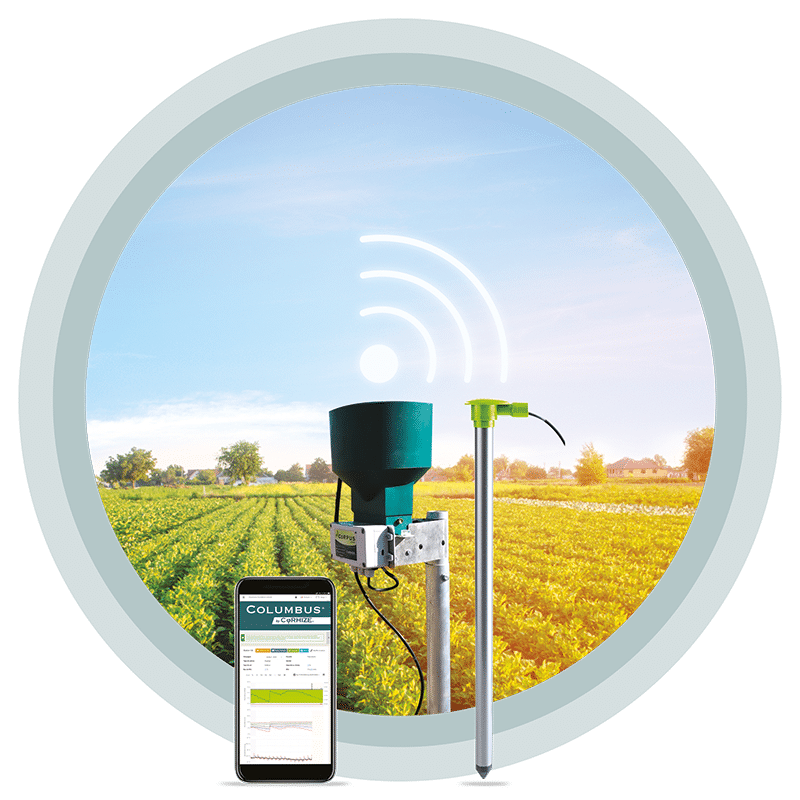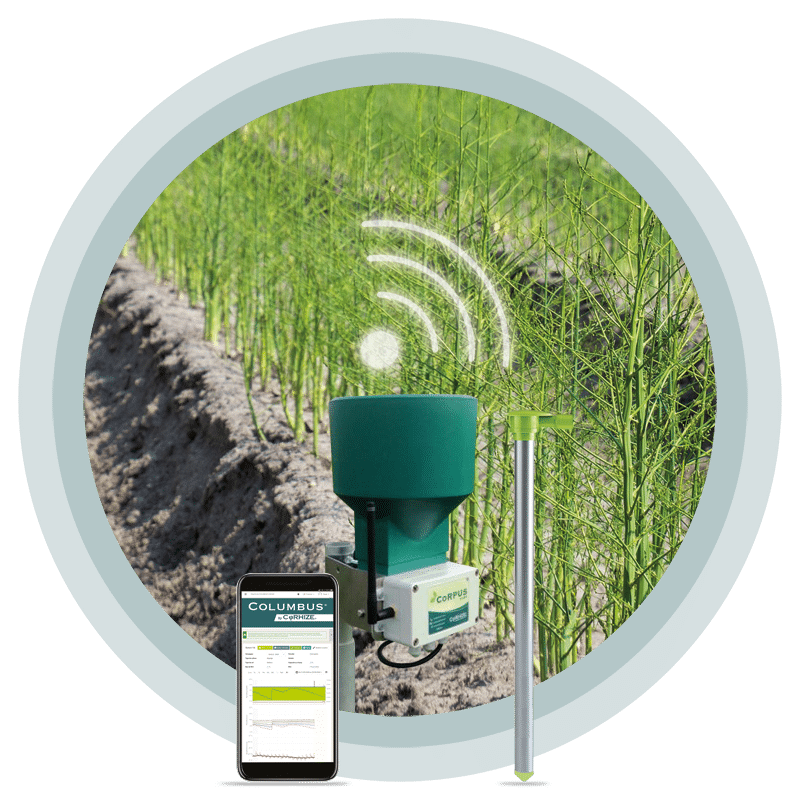Nutrisens probe for TRACKing NO3 and K in soil
Nutrisens is a probe that specifically measures variations in nitrate (NO3) and Potassium (K) concentrations in the soil. Its development and patent took several years to develop the Spanish company Verde Smart with the University of Barcelona (UAB Barcelona). The evolution of mV values can be converted to meq or ppm and extrapolated in comparison to soil solution sampling measures made at t times.
The Nutrisens probe is therefore used to adjust nitrogen and potassium doses to optimize their efficiency by the plant. It can be the ground data of a tracking device that also includes analyses of sap or NDVI measurements.
At the end of the spatula, the NO3 and K sensors are covered with a filter-protective gelatin. The sensors have a lifespan of two years in perennial crops and one year in annual cultivation, beyond which to replace the spatula. The cable and electronics part have a lifespan of 7 to 10 years.Nutrisens is therefore composed of 3 parts:
- The probe with both sensors and its cable
- electronic interface and cable
- cable to connect to telemetry
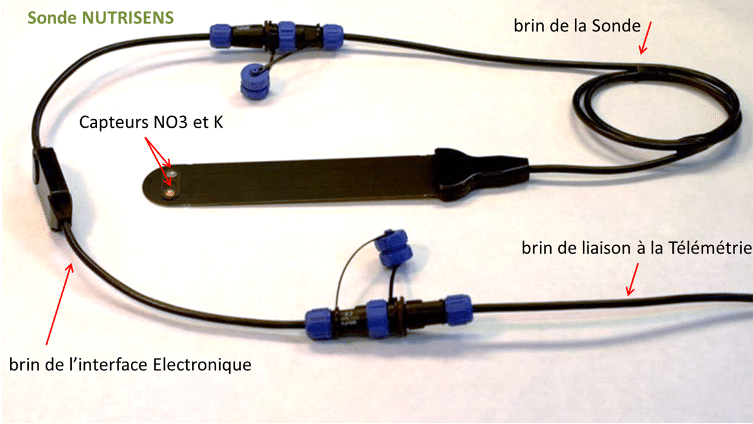
The Nutrisens probe highlights:
- NO3 and K consumption in relation to soil concentrations and
- effects of soil temperature and moisture on consumption and release, particularly useful in AB
- possible leaching losses
A complete connected kit on the same telemetry box
- one or two Nutrisens probes
- an AquaCheck capacitive probe to track soil moisture and compare NO3 and K values to identical humidity to free from the dilution effects of the soil solution. The Aquacheck probe also tracks changes in ground temperature horizon by horizon.
- an automatic rain gauge
- a CoRPUS (Sigfox)
- three porous Rhizon probes and their syringes to suck soil solution from time to time for in situ measurements
- synthetic sand for perfect contact of Rhizon probes
- two Portable Horiba precision drives to measure in situ the concentration of NO3 and K (a reader can track a very large number of probes)
The installation methodology is precise.
With its expertise with the Nutrisens probe, Verde has established a precise installation methodology to ensure maximum reliability of the device. CoRHIZE trains users by installing the first kits.
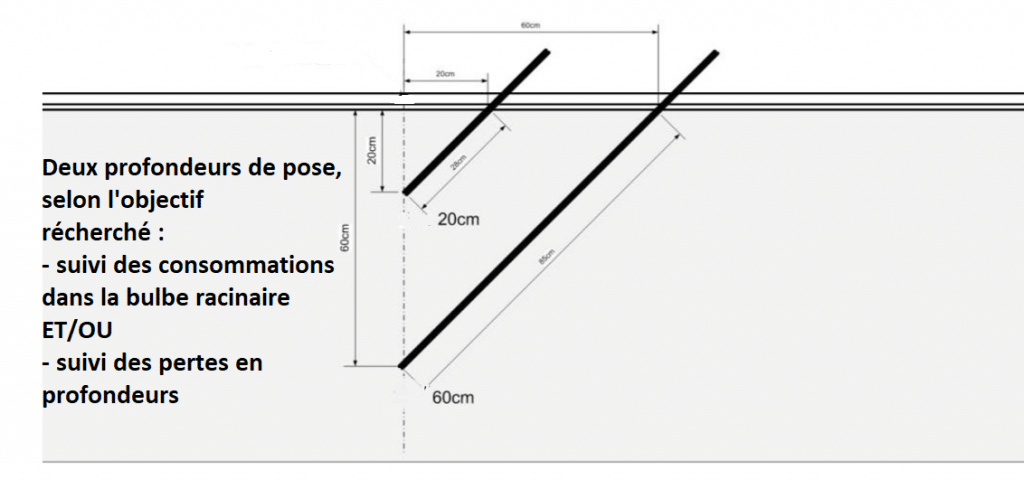

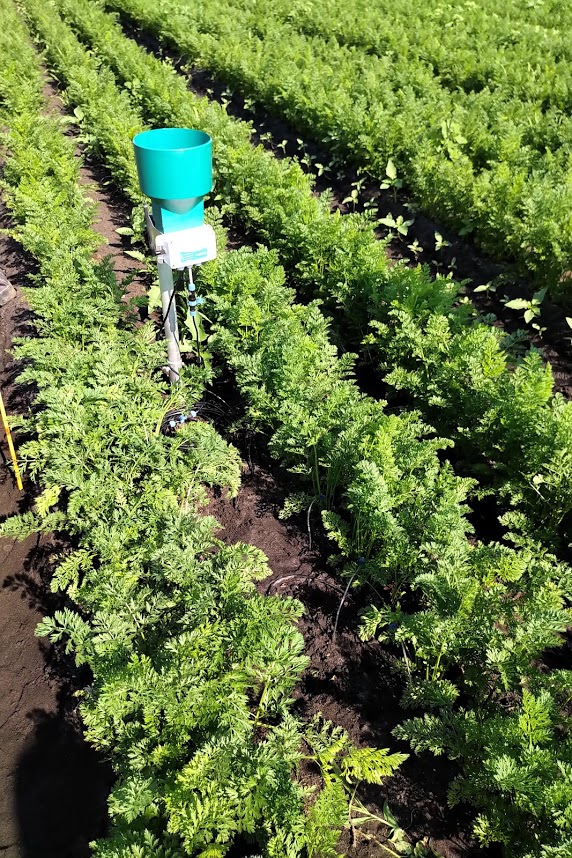
Nutrisens probe (and its porous Rhizon probes) combined an AquaCheck capacitive probe on Corn and Carrots
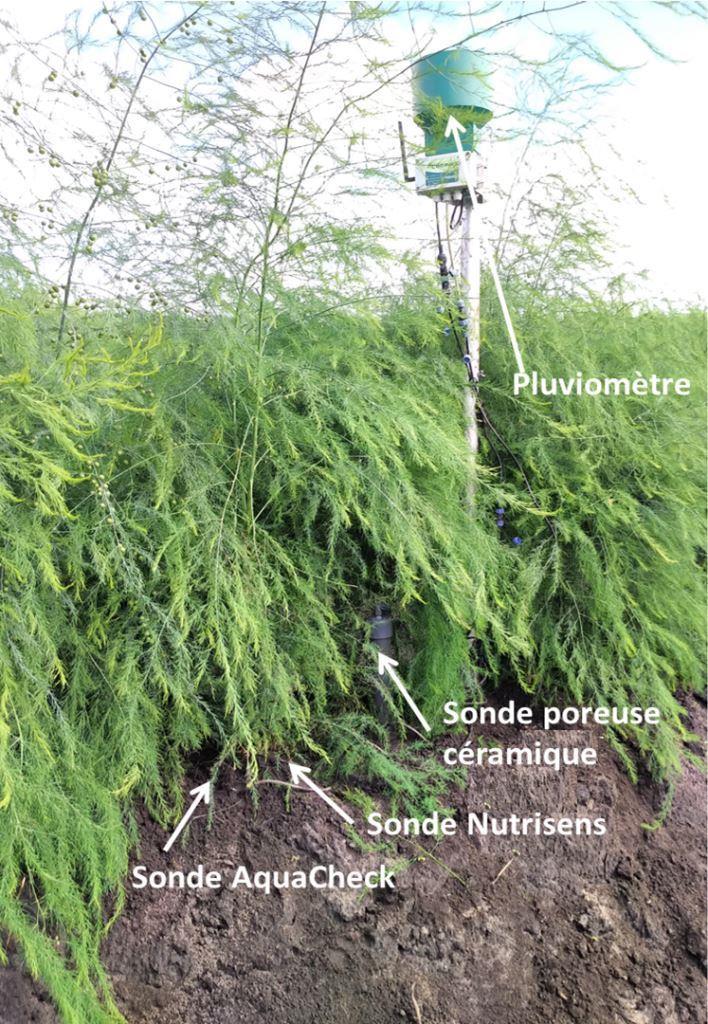

Horiba high-definition handheld electronic reader
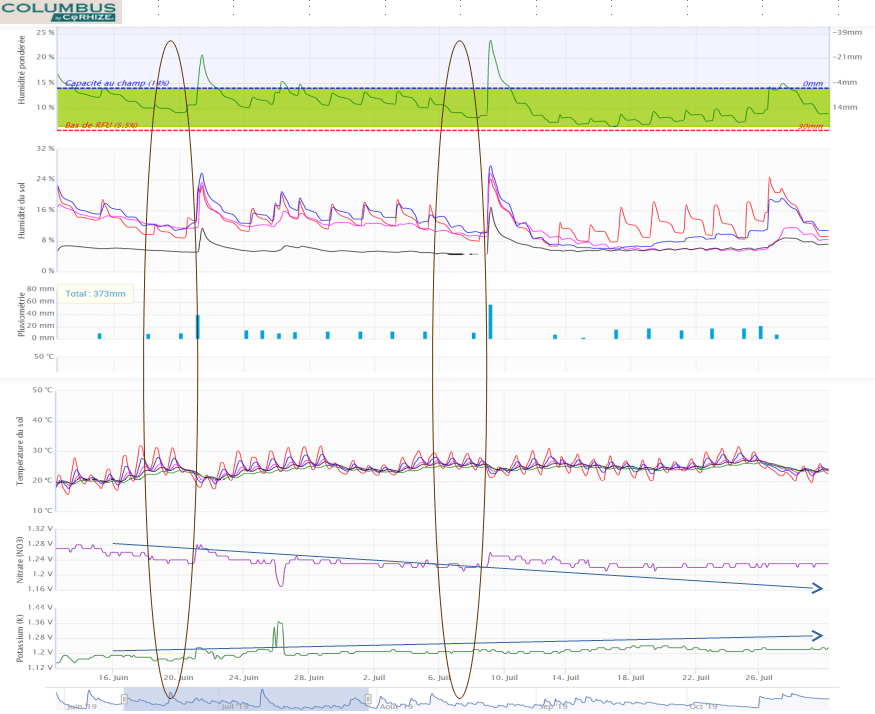
Example of view of Columbus: comparison of NO3 and K over a few weeks with similar humidity to avoid dilution effect
Effects of stress on NO3 and K consumption
All stresses contribute to the stomatal closure of plants, resulting in:
- a decrease in NO3 consumption
- an increase in K consumption
Indeed by an increased concentration of K in the stomata the plant seeks to resist their closure caused by stress and seeks to maintain a photosynthetic activity at its optimum. The origin of stress can be multiple (cold, lack or excess water, high salinity, high temperature and low humidity (hot and dry air).
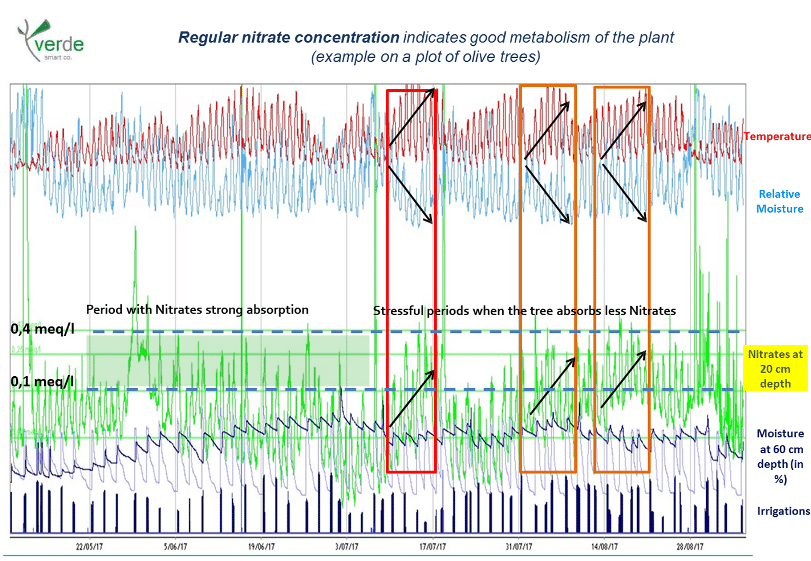
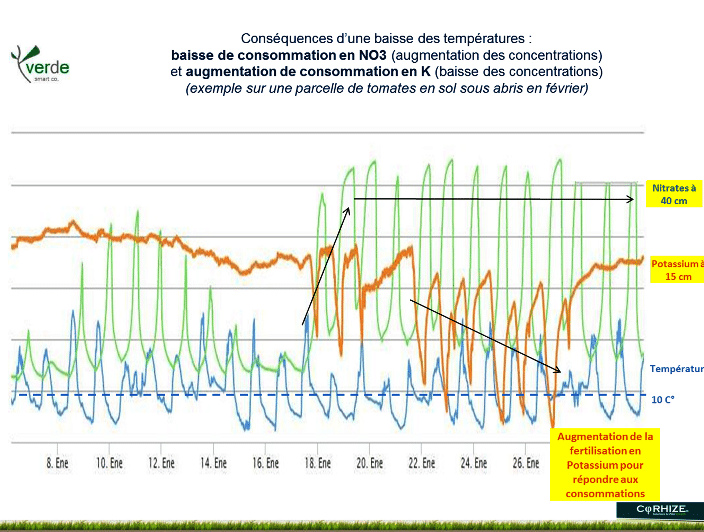
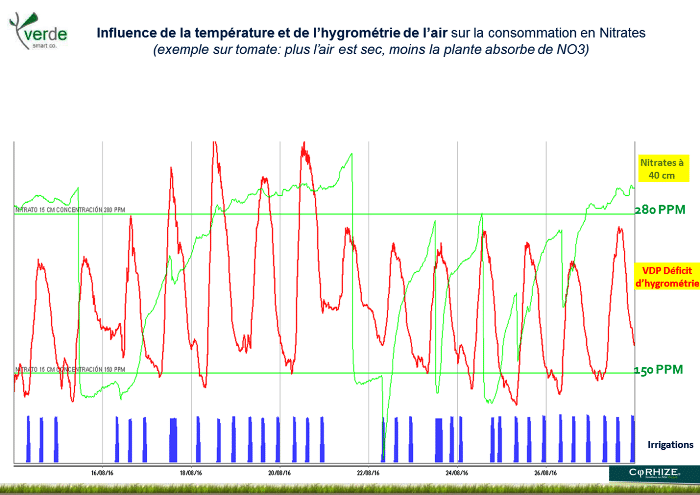
The daily evolution of NO3 and K concentrations is a reliable indicator of the plant’s state of operation. The dynamics of mineral absorption are different from that of water absorption. Its fine tracking allows yields to be pulled upwards, fruit growth or grain filling improves, and better quality.
By helping to adjust fertilizing doses, the Nutrisens probe thus allows both better productivity and a limitation of nitrate and potassium losses in the soil, sources of economic loss and pollution.
Contact us for more information

